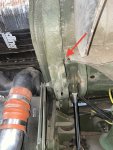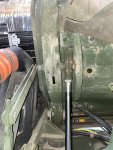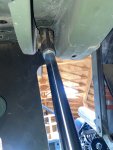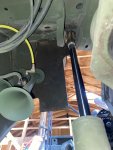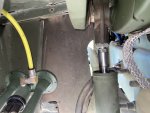A little side probably isn't a problem, the pivot structure is fairly rigid, and the cab after all is lifted asymmetrically from one side anyway, so it has some tolerance in this regard.
As Chucky mentioned, you don’t want the front uphill. By design, the lift rotates the cab a few degrees past the balance point in relation to the force of gravity, so it will tend to stay there naturally. Leaving the control in the “lift“ position should keep it locked hydraulically.
You can usually see this point when you stop the pump near the end of the cabs upward movement and the cab keeps moving forward by itself. It is real easy to find when using the hand pump. That un-pumped movement is gravity pulling it down the other side of the balance point till the hydraulic cylinder is fully extended.
You can confirm it is past balance by shifting the control from raise to lower. The cab should not move. If it lowers you were not over the balance point... With the control still set to lower, step around to the front of the cab and try to push it back over by hand(might take two people). This is good for you to play with and will give you an idea how much force it takes to get a non hydraulically restrained cab to lower on its own From the other side of the balance point. With the controls set to lower, Once you push it past the balance point, gravity will do the rest.
Also as chucky alluded to, the cab is controlled and restrained by hydraulics. In normal operation, if you raise the cab past balance and leave the control in the raise position, it is pretty safely restrained in that position by gravity and hydraulic control. If you are working on the cab lift hydraulic circuit, you MUST provide an alternate method of restraint to insure the cab stays where you place it until the hydraulics are restored AND pressure tested… this is usually done with a crutch(2X4?) installed between the truck crane lift structure behind the engine and the back edge of a fully raised cab…


